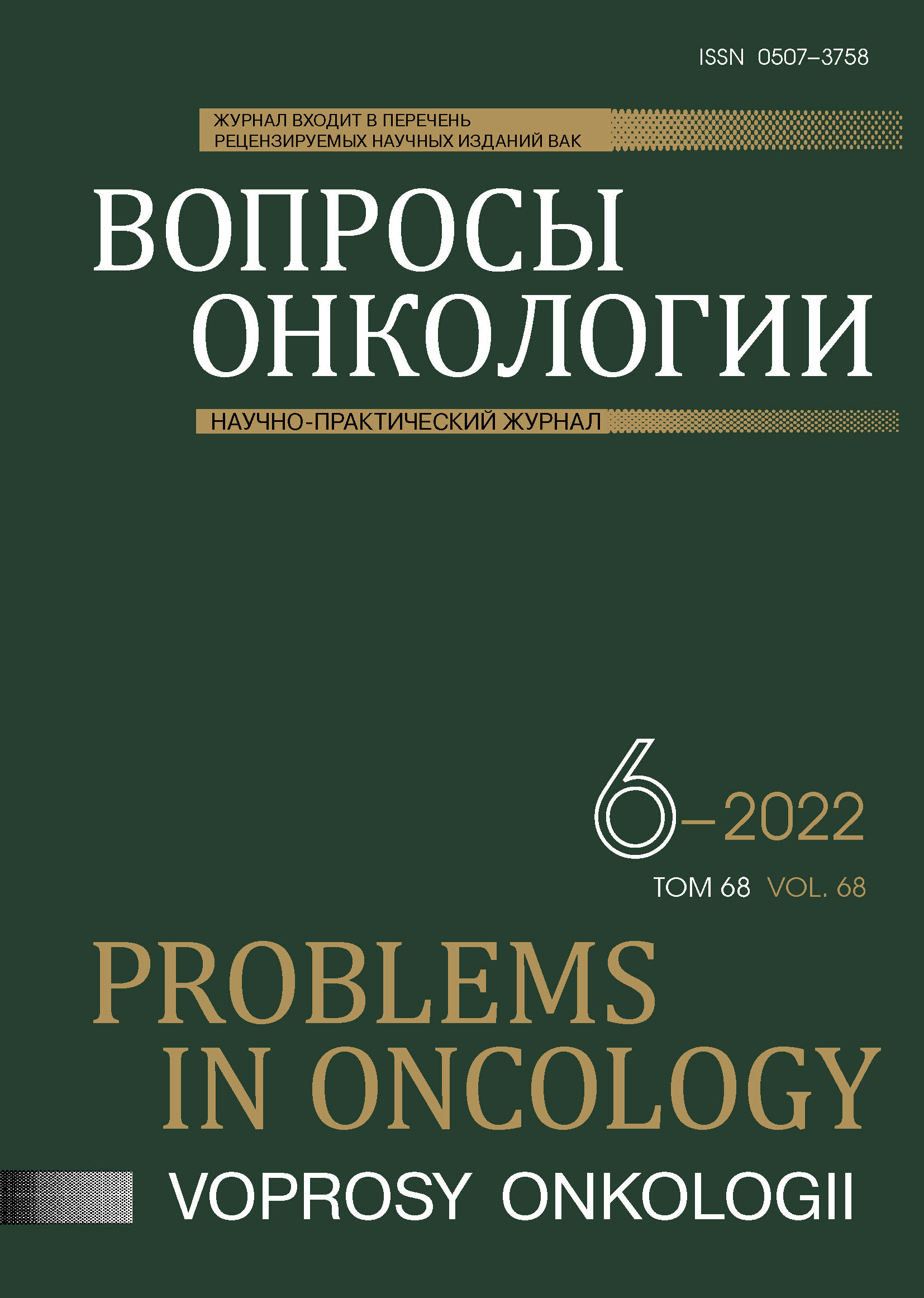Abstract
The literature review is dedicated to the main problems of radiobiology which defines the basics of radiation therapy and describes reactions of normal and pathological tissues to radiation and their mechanisms. The implementation of different variants of hypofractionation, and high-dose radiation, including stereotactic radiation therapy and radiosurgery, has shown that the radiobiology of tumors and normal tissues, with these methods applied, does not correspond to traditional concepts specific to classical fractionation, and the traditional linear-quadratic model cannot adequately explain the effects that occur.
Attempts are continuously being made in order to modify the linear-quadratic model, however, none of them has so far been able to provide an accurate assessment of cell survival in the high dose range, which is largely due to radiation-induced vascular endothelial damages, activation of immune and non-target processes. Modified linear-quadratic models need further verification, and they should be used with caution in clinical practice, together with QUANTEC tools. The basic concepts of radiobiology can be reduced to several interrelated models: linear-quadratic, vascular, immune and non-target. There is a need to create a single integrated model that combines the previous ones.
References
Kaidar-Person О, Chen R. Hypofractionated and Stereotactic Radiation Therapy. A Practical Guide / Zeman Е.М. The History and Radiobiology of Hypofractionation // Springer International Publishing AG. 2018:1-32.
Qiu B, Aili A, Xue L et al. Advances in Radiobiology of Stereotactic Ablative Radiotherapy // Front Oncol. 2020;10:1165. doi:10.3389/fonc.2020.01165
Арсеньев А.И., Новиков С.Н., Канаев С.В. и др. Перспективы использования стереотаксической лучевой терапии при первичных и олигометастатических опухолевых поражениях лёгких // Вопросы онкологии. 2021;67(3):323-331. doi:10.37469/0507-3758-2021-67-3-323-331 [Arsenyev AI, Novikov SN, Kanaev SV et al. Perspectives of stereotactic radiotherapy in primary and oligo-metastatic pulmonary tumors // Voprosy oncologii. 2021;67(3):323-331 (In Russ.)]. doi:10.37469/0507-3758-2021-67-3-323-331
Trifiletti DM, Chao ST, Sahgal A, Sheehan JP. Stereotactic Radiosurgery and Stereotactic Body Radiation Therapy // Springer Nature Switzerland AG. 2019.
Beyzadeoglu M, Ozyigit G, Ebruli C. Basic Radiation Oncology // Springer, Berlin, Heidelberg. 2020. doi:https://doi.org/10.1007/978-3-642-11666-7
Sethi RA, Barani IJ, Larson DA, Roach M. Handbook of Evidence-Based Stereotactic Radiosurgery and Stereotactic Body Radiotherapy // Springer. 2016:11-19. doi:10.1007/978-3-319-21897-7
Joiner MС, Kogel AJ. Basic Clinical Radiobiology // Taylor & Francis Group. Ed. 5th. 2018. doi:https://doi.org/10.1201/9780429490606
Kirkpatrick JP, Soltys SG, Lo SS et al. The radiosurgery fractionation quandary: single fraction or hypofractionation? // Neuro-Oncology. 2017;19(2):38–49.
Brown JM, Carlson DJ, Brenner DJ. Dose escalation, not «new biology», can account for the efficacy of stereotactic body radiation therapy with non-small cell lung cancer. In reply to Rao et al. // Int. J. Radiat. Oncol. Biol. Phys. 2014;89(3):693–694.
Wang JZ, Huang Z, Lo SS et al. A generalized linear-quadratic model for radiosurgery, stereotactic body radiation therapy, and high-dose rate brachytherapy // Sci. Transl. Med. 2010;2:39-48. doi:10.1126/scitranslmed.3000864
Guerrero M, Li XA. Extending the linear-quadratic model for large fraction doses pertinent to stereotactic radiotherapy // Phys. Med. Biol. 2004;49:4825–4835. doi:10.1088/0031-9155/49/20/012
Park C, Papiez L, Zhang S et al. Universal survival curve and single fraction equivalent dose: useful tools in understanding potency of ablative radiotherapy // Int. J. Radiat. Oncol. Biol. Phys. 2008;70:847–852.
Li S, Miyamoto C, Wang B et al. A unified multi-activation (UMA) model of cell survival curves over the entire dose range for calculating equivalent doses in stereotactic body radiation therapy (SBRT), high dose rate brachytherapy (HDRB), and stereotactic radiosurgery (SRS) // Med. Phys. 2021;48(4):2038-2049. doi:10.1002/mp.14690

This work is licensed under a Creative Commons Attribution-NonCommercial-NoDerivatives 4.0 International License.
© АННМО «Вопросы онкологии», Copyright (c) 2022

